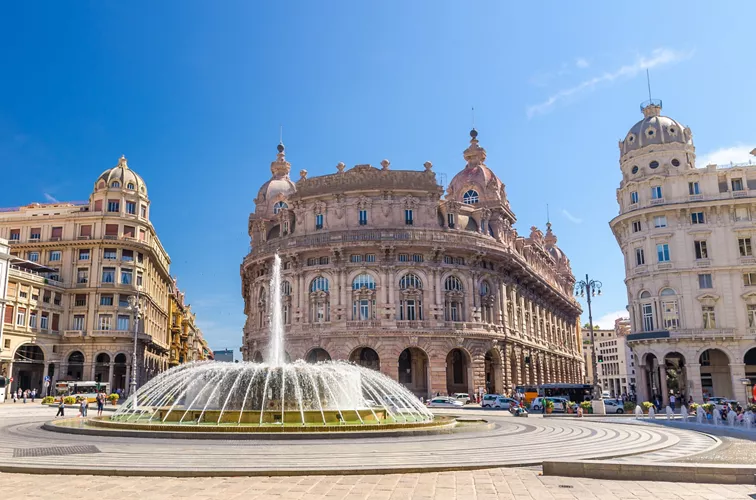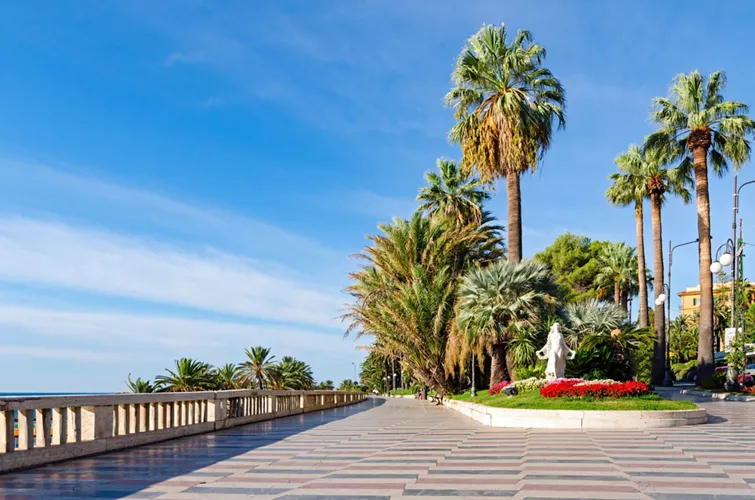Tucked-away villages, secret little beaches, superb nature: how enchanting Liguria is!
Liguria is a wonderful strip of land enclosed between the sea and the mountains, with pastel-colored houses and breathtaking views. With lush unspoiled nature, many small towns to discover, and an incomparable culinary tradition, it enraptures the eye and the heart.
A perfect destination for relaxation and sea life, but also for sport and adventure, it is made unique by the many seaside villages that characterize the Levante and Ponente Rivieras, between enchanting bays such as Portofino and the Cinque Terre and large cities such as Genoa.
1. Origins and historical background on Liguria

The earliest traces of the Ligurians, a population of Indo-European or pre-Indo-European origin, date back to the Neolithic period and are found at the site of the Caverna delle Arene Candide in Finale Ligure. Later came other Celtic and Phoenician tribes and then the Romans, who made it the 9th Augustan region. With the fall of the Roman Empire, the territory was occupied by Goths, Byzantines, and Lombards, by King Rotari and the Franks.
A Mediterranean trading power during the late Middle Ages, Liguria was a maritime republic from 1099 onwards. The Republic of Genoa, vying with Venice for supremacy in controlling the routes between the Mediterranean and the East, lived its golden age under Doge Andrea Doria, with the exception of a small interlude under the Visconti, France, and the Holy Roman Empire.
Liguria and Genoa linked their fortunes to Spain through an alliance with Charles V, initiating the period when rich merchants became important bankers. With the decline of Spain, Genoa was besieged by the Piedmont of the Savoy until the Napoleonic conquest, with the establishment of the Ligurian Republic and annexation to the Kingdom of Sardinia.
Even before the Unification of Italy, the region was one of the leading areas of the industrial revolution with a role in the development, with the other nearby points of Milan and Turin, of the industrial triangle.
2. The main cities in Liguria

Symbol of the Riviera dei Fiori and the city of the most famous Italian song festival, Sanremo has an almond-shaped historic center, traversed far and wide by the stairways leading to the highest part as well as the typical narrow Carrugi. Enjoy the extraordinary views, shop in the jewelers and luxurious boutiques that crowd the old town, and try your luck at the Casino dating back to the early 20th century.
The first thing you have to do in Genoa is to abandon yourself to its fascinating chaos, letting yourself be seduced by the many attractions that attract tourists from all over the world.
The 16th-century Old Port, for a start, together with the nearby Aquarium of Genoa, the largest in Europe: here you can admire 70 tanks with 15,000 animals of more than 400 different species.
Take time to wander around the historical center, and visit the Cathedral of San Lorenzo, the city’s most important church, the Ducal Palace, and the Palazzi dei Rolli, the most prestigious buildings in the historical center that were once the homes of noble families.
Genoa is the sea. To the east of the city lies the Tigullio Gulf a succession of marvelous inlets such as Portofino Paraggi, the bay of Santa Margherita Ligure, San Michele di Pagana, and the Gulf of Rapallo as far as Zoagli. Beaches and marinas where tourism combines with glamour.
The pearl set in the center of the Golfo dei Poeti is La Spezia, a popular destination for tourists in all seasons. With its beautiful Art Nouveau buildings, many churches, museums, and gardens, as well as a beautiful waterfront dotted with palm trees and flower arrangements, it is a small jewel of unquestionable charm.
Be sure to pay a visit to St George’s Castle, a fortification built in the Middle Ages for defensive purposes that dominate the cityscape.
Finally, Savona, an ancient city rich in history that in the past rivaled Genoa: one of its symbols is in fact the Priamar Fortress in Savona, a large defensive complex located near the port and built to demonstrate its supremacy over its competitor. To this day, it is the most important military fortress in western Liguria despite a long period of neglect.
3. What to see in Liguria: 6 unmissable destinations

In addition to the Aquarium of Genoa, a must, especially if you are traveling with children, the Cinque Terre, a UNESCO World Heritage wonder located along a wonderful stretch of coastline on the eastern Ligurian Riviera, are not to be missed: Monterosso al Mare, Vernazza, Corniglia, Manarola, and Riomaggiore, linked by the Via dell’Amore. Timeless little gems, perfect for exploring even in a few days.
Also plan to spend some time in the Golfo dei Poeti, a wide and deep inlet at the center of which is La Spezia, stretching from Porto Venere to Lerici, among churches and ancient villages, perched medieval castles and, of course, dream beaches. Also worth visiting in the area is Palmaria, a beautiful UNESCO World Heritage island opposite the village of Porto Venere.
If you can’t resist sunbathing and sea paddling, take a trip to Baia dei Saraceni, Varigotti’s famous golden beach awarded the Blue Flag: this was the mooring point for merchants from Byzantium.
Finally Sestri Levante, “the city of the two seas”. The village is in fact joined to the mainland by an isthmus, a thin strip of land that divides the Bay of Fables where the marina, from the smaller but even more picturesque Baia del Silenzio.
4. The unusual places of Liguria: 2 stops for the curious

Away from the beaten track, you should visit Bussana Vecchia, a hilly hamlet in the municipality of Sanremo that is a lively artistic village built on the ruins of an abandoned medieval village.
Another little-known destination is the Grotte di Toirano: located in the province of Savona, they offer numerous caves from which you can admire a spectacle of stalactites and stalagmites, as well as the archaeological remains of the Grotta della Bàsura, which houses the remains of cave bears and prehistoric men from the Upper Palaeolithic period.
5. The typical products of Liguria: 4 specialties

Wherever you go, you will smell its enveloping scent: the famous basil, growing luxuriantly everywhere here, is a much-used ingredient in the area’s cuisine and the main ingredient of the very tasty pesto alla Genovese. Try it in the traditional version or in the light version, without garlic, although the Genoese would turn up their noses. On that note, try Vessalico garlic, which has an intense, almost spicy flavor, but a more delicate aroma.
Also typical is the focaccia Ligure, which the Genoese also eat for breakfast with their cappuccino. Try the focaccia di Recco, a Ligurian delicacy without yeast and filled with crescenza cheese that will win you over forever.
If you are a cheese lover, your palate will thank you: this is an area of raw milk cheese production, such as prescinsêua, formaggetta, and u Cabanin. For these delicacies, as for many local cured types of meat, we have the Cabannina, a prized native Genoese breed of cattle, to thank.
6. Events in Liguria

Among the many events that Liguria hosts, choose the most famous: the Sanremo Festival, an Italian music festival held between February and March, which since 1951 has attracted artists and tourists from all over the world and monopolized the television schedule for several days.

